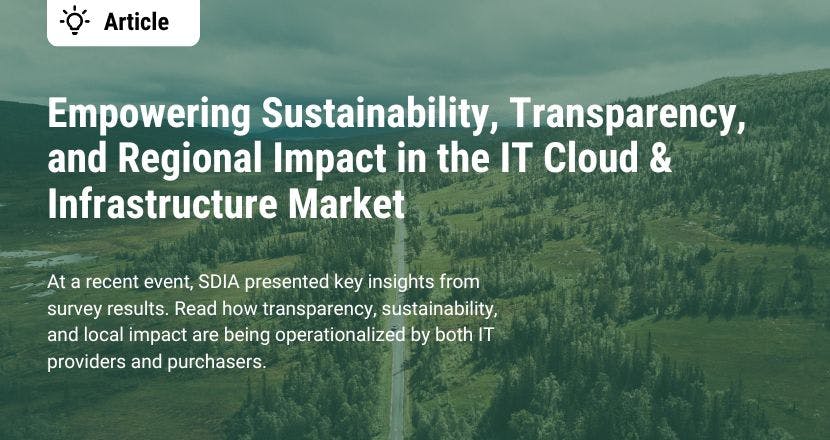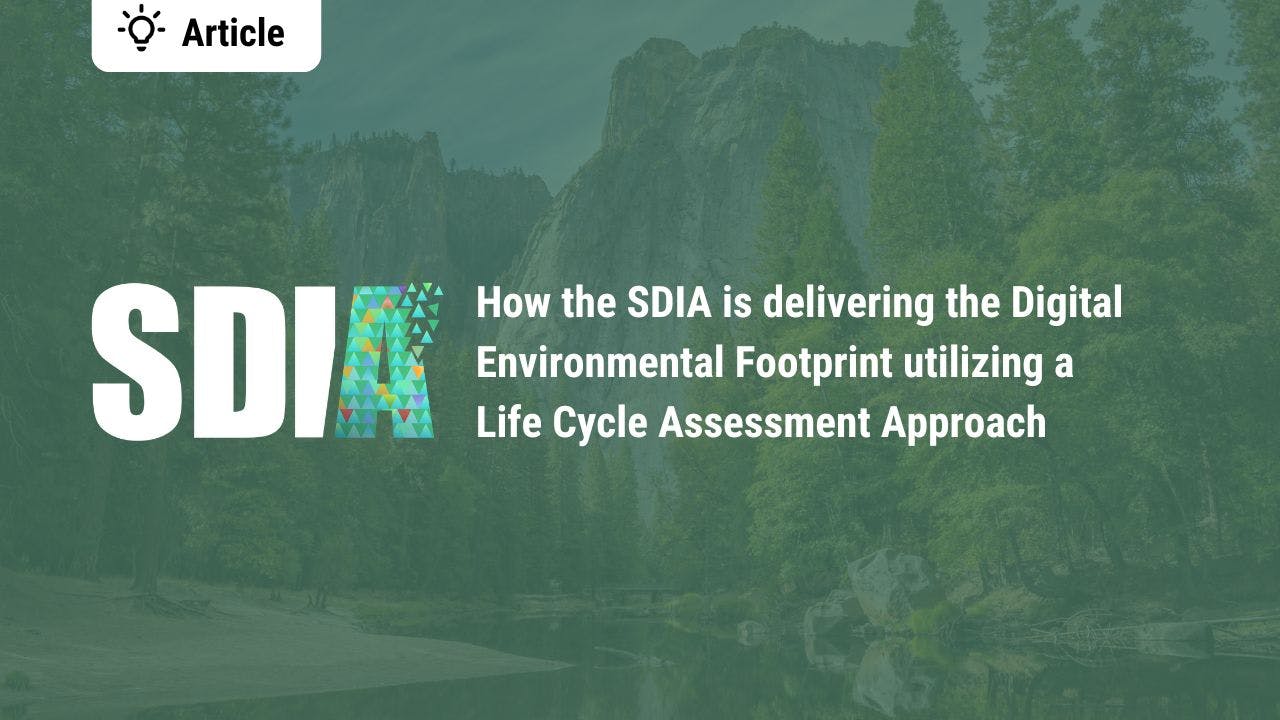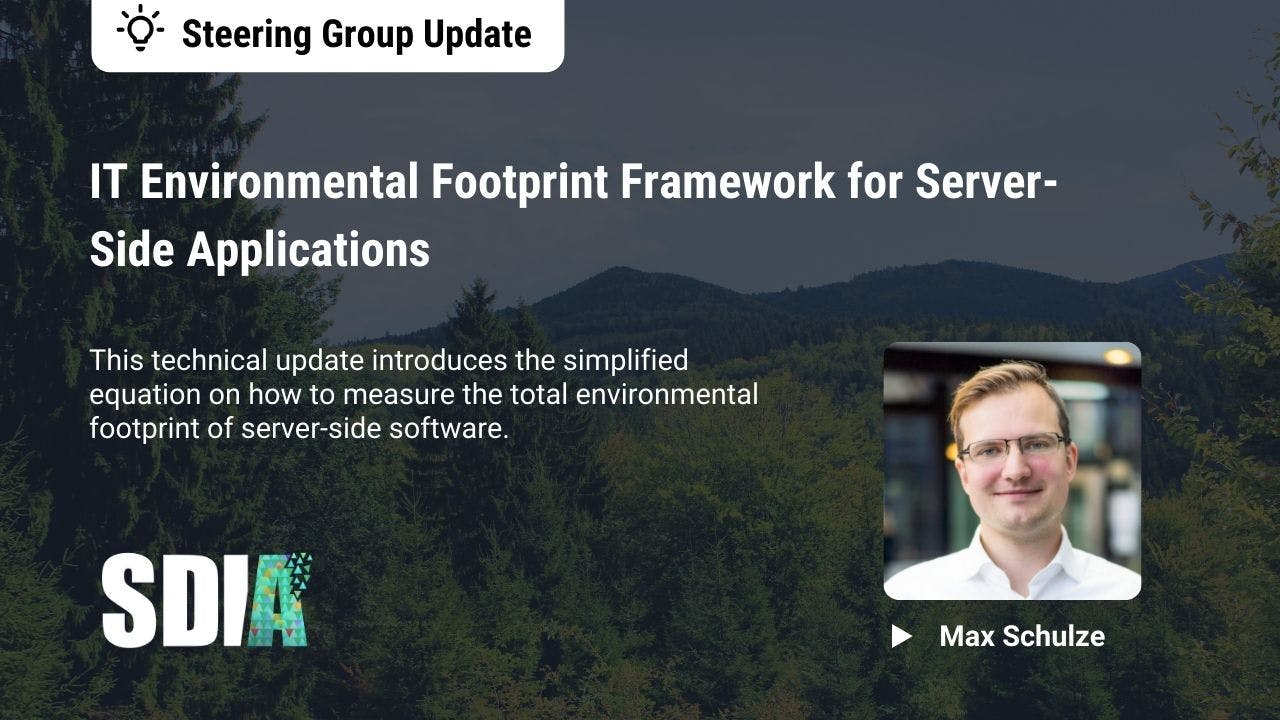In a rapidly digitalizing world, the market for IT and cloud infrastructure is facing unprecedented challenges. While we may benefit from the availability of more digital products, the environmental and societal impacts of this growth cannot be ignored. As global players dominate the market, it is becoming increasingly difficult—yet more critical—to find ways to foster competition and shift market towards sustainability and local impact.
At our recent event, Empowering Sustainability, Transparency, and Regional Impact in the IT Cloud & Infrastructure Market, we brought together providers and purchasers to explore these pressing issues. Through insightful survey results and panel discussions with industry leaders, we examined how values like sustainability, transparency, and local impact are being operationalized in the supply chain of digital products and services.
Survey Insights: The Purchaser Perspective
Our first survey focused on IT purchasers, asking them how they embed values of transparency, sustainability, and local impact into their procurement processes. Here are some of the main insights:
Purchasers are struggling with transparency in their supply chain.
Companies purchasing IT infrastructure often lack the necessary data to fully understand their suppliers' sustainability efforts. This makes it difficult to hold providers accountable or to assess the true environmental and societal impact of the products they procure. We need a shift towards openness in reporting and greater transparency from providers of IT cloud & infrastructure services.
This isn’t just about collecting data—it’s about offering a clear picture of where providers stand today, what improvements they are planning, and what progress has already been made. Without this transparency, purchasers are left in the dark, making it harder for them to make informed, responsible decisions.
Similarly, purchasers also need to transparently account for the IT infrastructure they purchase in their sustainability reports.
Local impact remains a blind spot.
Purchasers reported that they often struggle to identify regional providers who contribute to their communities and reduce environmental footprints. Large global players dominate the market, making it difficult for smaller, local companies to showcase their value. Regional providers must become more visible and proactive in demonstrating how their work benefits local communities—not just economically, but socially and environmentally as well.
Sustainability is becoming increasingly important, but concrete criteria are lacking.
The survey revealed that many purchasers are just beginning to integrate sustainability criteria into their processes, and the focus has so far been mostly on ICT equipment. However, to make a significant impact, the scope of sustainability criteria must expand to include other key areas like cloud services and software.
Purchasers need clear, actionable criteria that allow them to evaluate and compare providers based on their environmental and social impact across the full digital infrastructure spectrum.
Survey insights: The Provider Perspective
Our second survey focused on how IT & cloud infrastructure providers operationalize the values of transparency, sustainability, and local impact in their businesses.
Providers face pressure to improve transparency, but lack clear frameworks.
Many providers feel pressure to be more transparent with their operations, especially in how they address sustainability. However, without consistent, industry-wide standards or frameworks, it is difficult for them to know what and how to report. This lack of clear guidelines leaves providers uncertain about how to effectively communicate their transparency efforts to purchasers.
Providers are already taking steps to meet sustainability goals, but the lack of standardized metrics and frameworks makes it difficult for them to measure, report, and communicate their impact effectively.
Sustainability doesn’t yet translate into business value.
Like their customers, providers face significant pressure to improve transparency and sustainability, but many struggle to align these efforts with their business models. From the provider’s perspective, sustainability doesn’t yet translate into tangible business value. While there is growing demand for more sustainable services, this shift has not yet led to increased revenue or competitive advantage.
We need to shift the perception of sustainability from an extra cost to added value.
Regional providers struggle to compete with global players.
Another key challenge is the competition with global providers. Many regional providers have the ambition to compete, but they often lack the visibility and resources to differentiate themselves. They are making outsized contributions to their local communities by creating jobs, paying local taxes, investing in environmental initiatives, and fostering local collaboration, but these efforts are not recognized in the market.
What would help is creating case studies that showcase the success of regional providers, highlighting how they outperform global players in terms of positive local impact and sustainability. By emphasizing these strengths, regional providers can differentiate themselves and become more competitive in the market.
In order to achieve this, we need clear sustainability guidelines and metrics. Without standardized frameworks, it’s hard for regional providers to communicate their impact in a way that resonates with larger purchasers. It’s crucial that we all speak the same language when it comes to sustainability—having consistent metrics and frameworks across the industry will make it easier for providers to measure and report their efforts, and for purchasers to evaluate and compare them effectively.



.png?ixlib=gatsbyFP&auto=compress%2Cformat&fit=max&w=1994&h=1132)

.jpg?ixlib=gatsbyFP&auto=compress%2Cformat&fit=max&rect=0%2C44%2C600%2C800&w=600&h=800)
